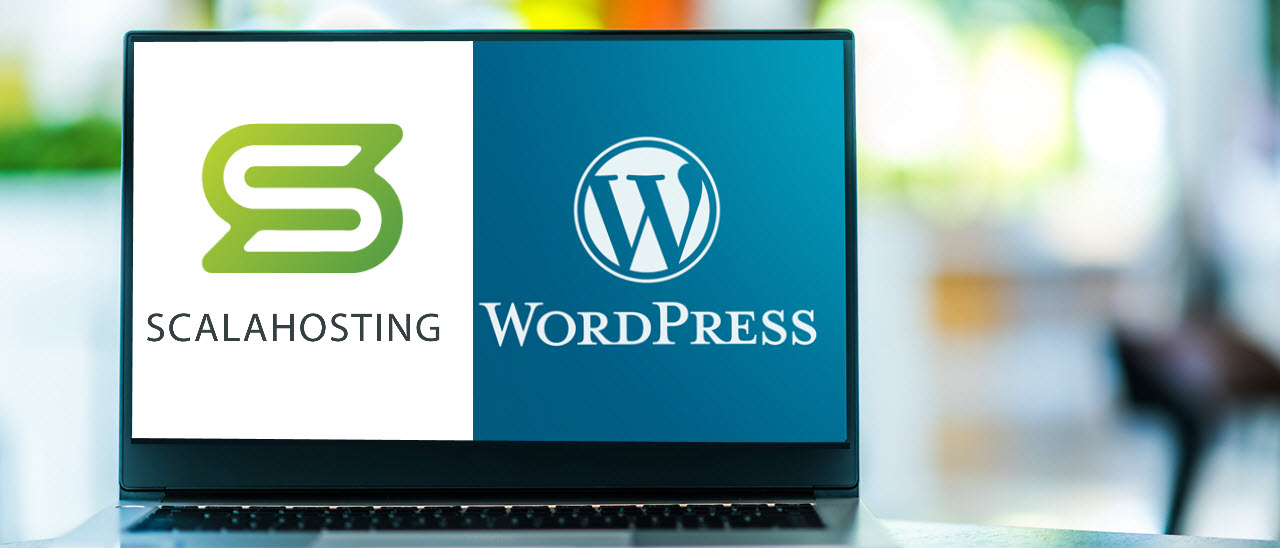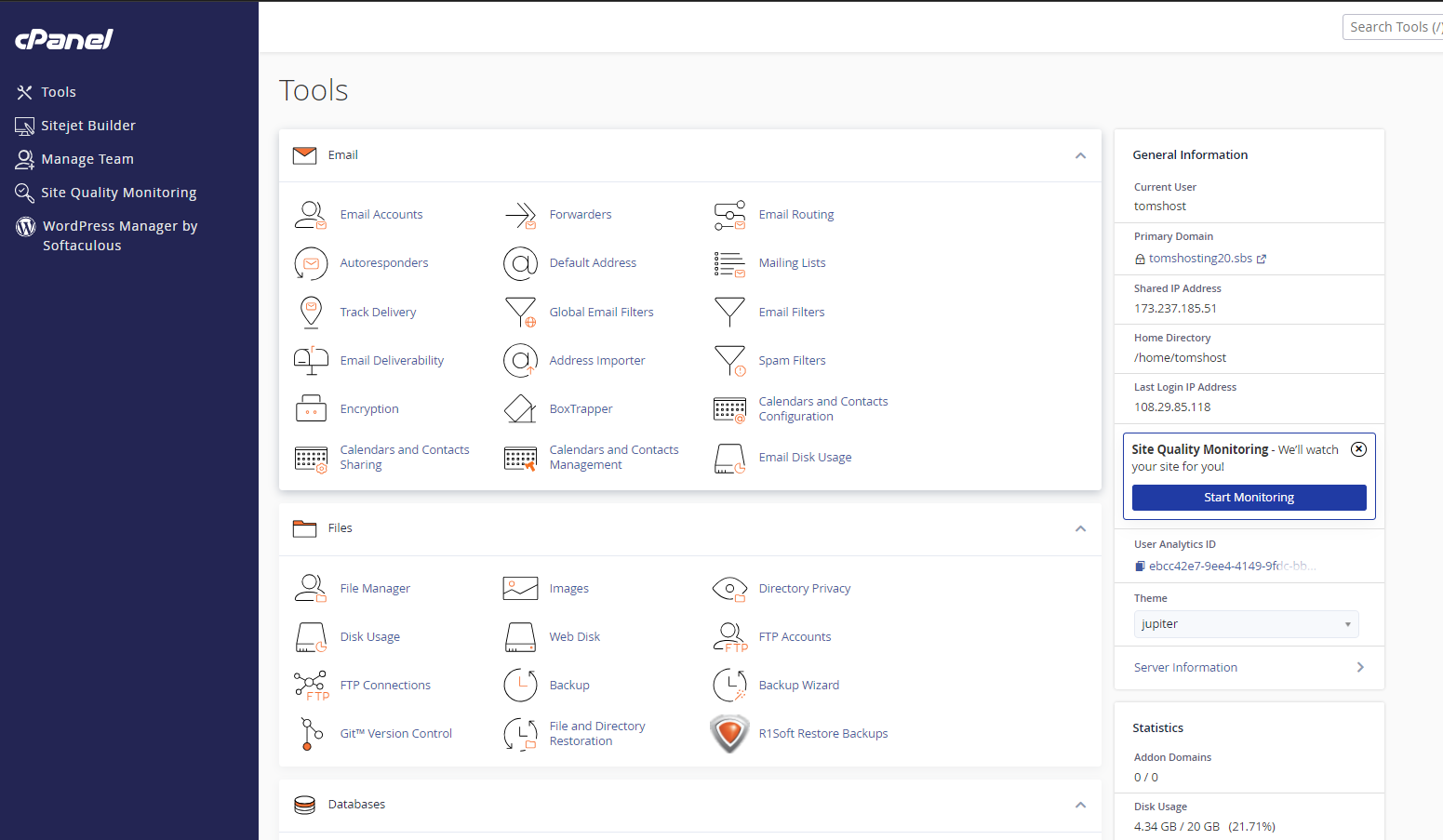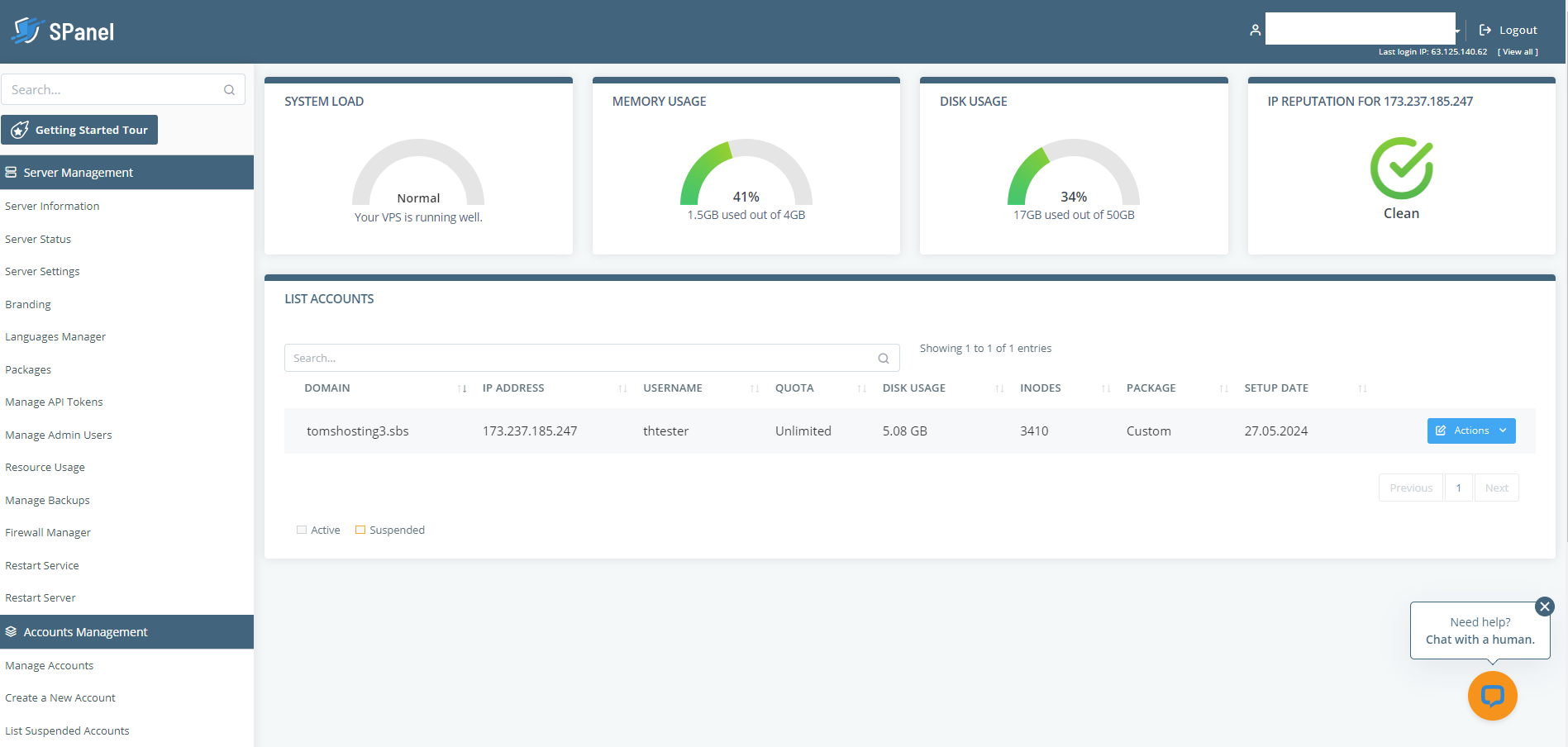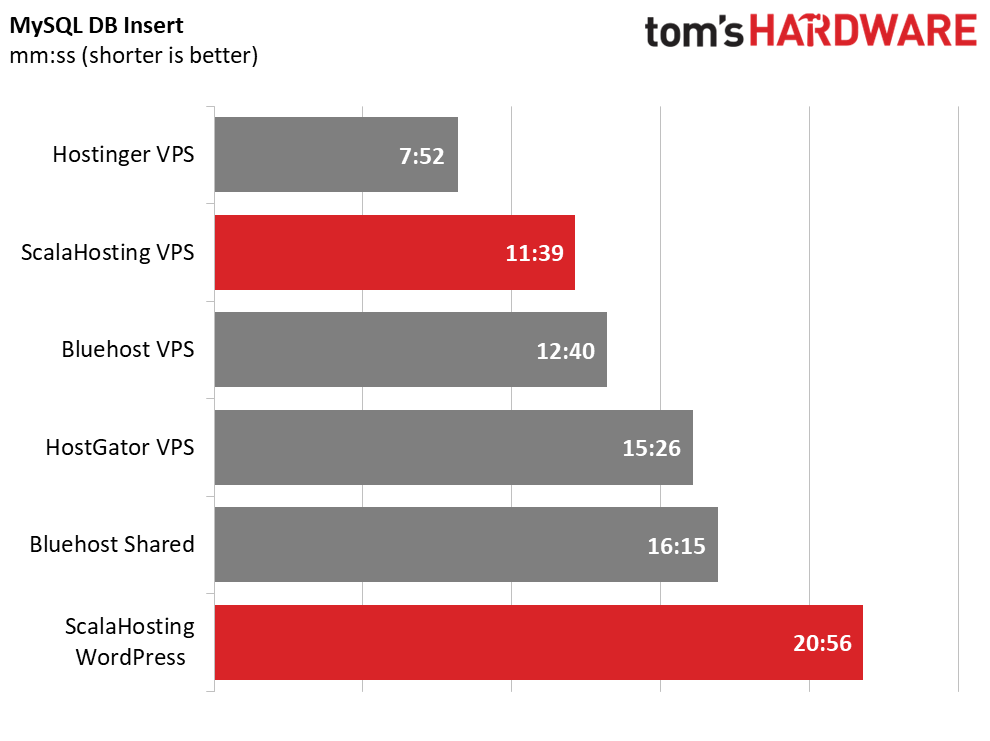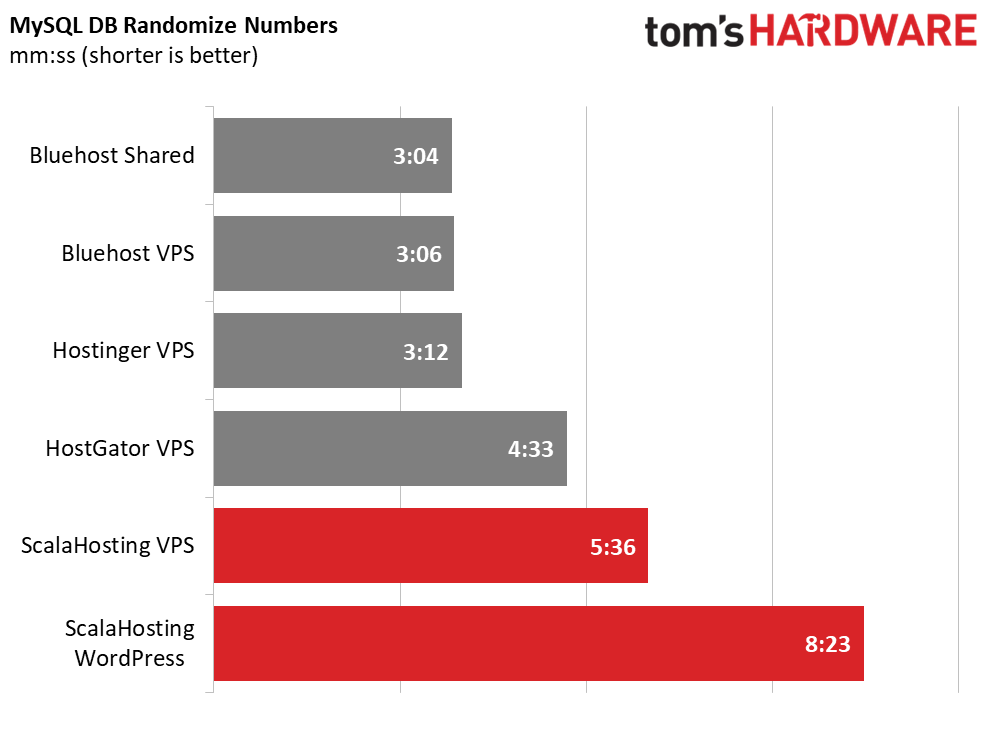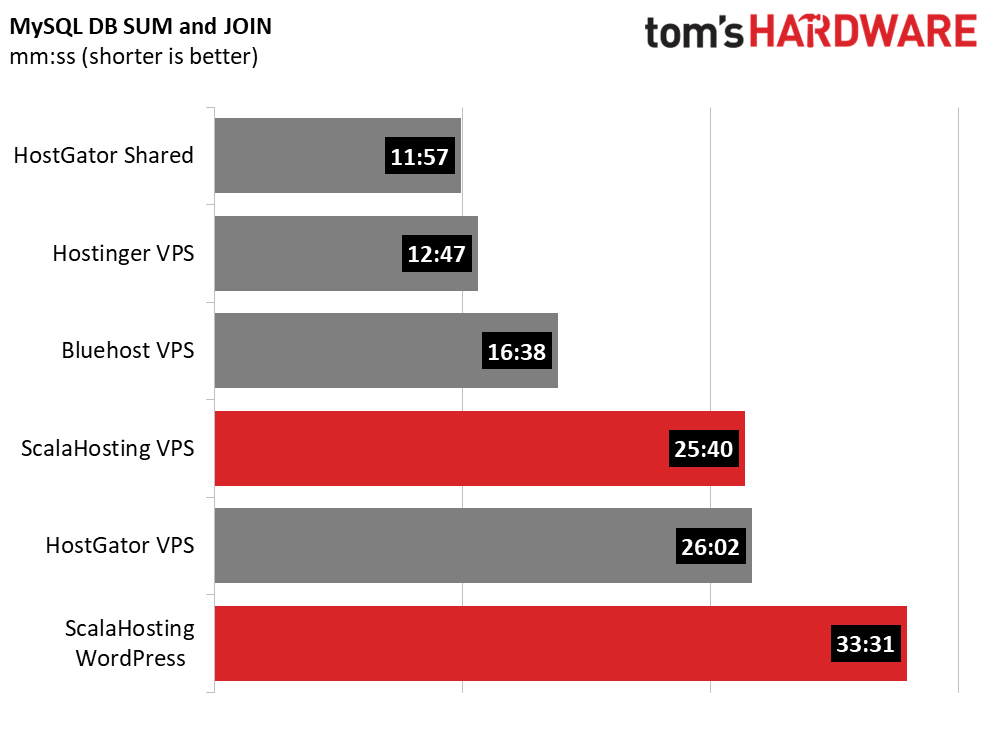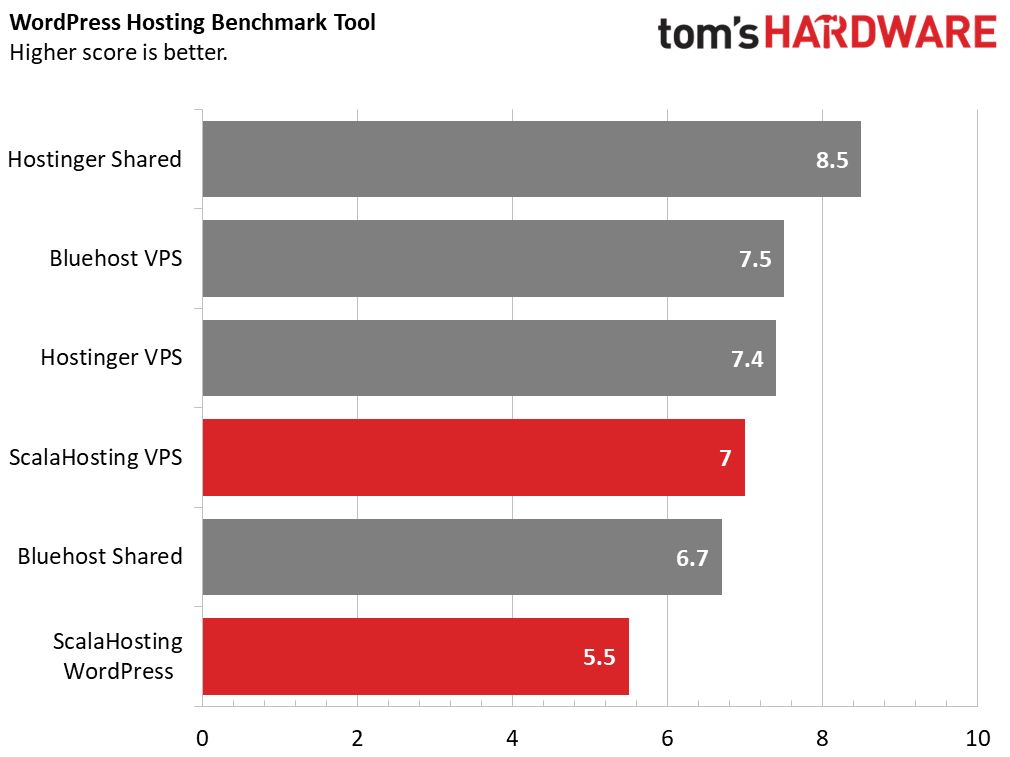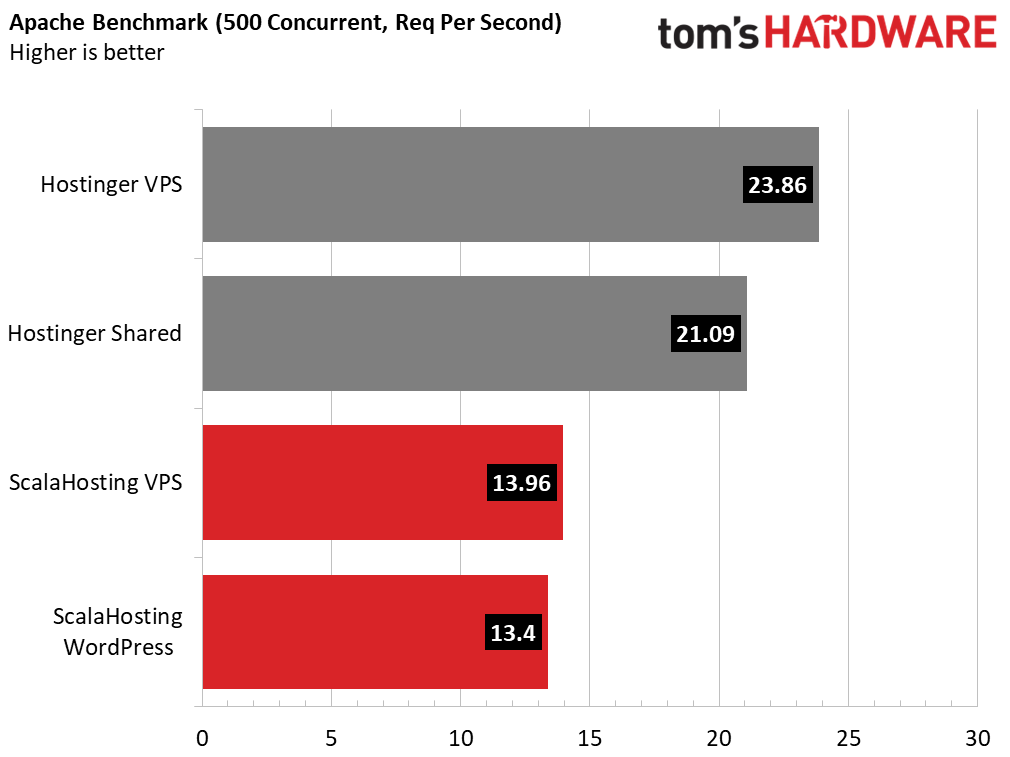Tom's Hardware Verdict
ScalaHosting offers a range of attractive managed VPS and shared hosting plans that are affordable and easy to control, thanks to some really helpful management software. WIth a helpful ticketing system, support is also great, but performance could be better.
Pros
- +
Affordable plans
- +
Powerful S Panel software
- +
Shared WP plan can handle a lot of traffic
- +
Excellent customer support, ticketing service
Cons
- -
cPanel VPS option is expensive
- -
Slower-than-average database speeds
- -
You pay a lot more for a 36-month VPS contract
Why you can trust Tom's Hardware
In business since 2007, ScalaHosting is not the most famous name in web hosting, but it provides excellent customer service, along with a variety of shared and managed VPS plans. The company’s offerings include shared hosting, WordPress Hosting and Managed VPS plans.
Starting at $2.95 a month (with 12-month commitment), the Shared and WordPress plans (both are basically the same, just that WordPress plans have WordPress preloaded), offer solid performance for the money. In fact, in our tests, ScalaHosting’s WordPress Mini plan was one of the only shared plans that could handle 500 concurrent requests.
The Managed VPS plans start at $29.95 a month with 12-month commitment and can also handle 500 concurrent requests, though at great speed. Most hosting providers charge extra for cPanel, the most popular control panel, if you want it with your VPS Plan. ScalaHosting provides its own software called SPanel that is just as powerful and easy to use as cPanel, though the latter is still available as an upgrade.
To find out how ScalaHosting stacks up to the best web hosting plans, we built websites and benchmarked two different plans, the Mini WordPress hosting ($2.95) and the Build #1 Managed VPS Plan ($29.95). Both were easy to set up and, whether we were using cPanel or SPanel, a joy to manage. Support, via the company’s ticketing system, was also a pleasure to deal with. Database processing and site serving on both plans was on the slow side, though, making for a mixed experience that keeps Scala just off our list of best VPS hosts.
Plans We Tested
| Header Cell - Column 0 | Cloud VPS | Shared |
|---|---|---|
Plan Name | Build #1 | WP Mini |
Price (12-month Min) | $29.95 | $2.95 |
CPU | 2 core | N/A |
RAM | 4GB | N/A |
Storage | 50GB | 10GB |
Bandwidth | Unmetered | Unlimited |
Database Limit | Unspecified | Unlimited |
Database Software | MariaDB 10.6.18 | MariaDB 10.6.18 |
PHP Version | 8.1.29 | 8.1.29 |
ScalaHosting Managed Cloud VPS
A good range of options are available with the ScalaHosting Managed VPS hosting. Four options (known as “Builds”) are available, covering a range of hardware specifications and pricing tiers.
We tested the Build #1 plan, priced at $29.95 with a 12-month contract (paid up-front). This virtual server has 2 CPU cores, 4GB of storage, and a 50GB NVMe SSD for storage. The bandwidth is unlimited, and there’s no database size limit beyond its contribution to your overall storage limit. That’s important to note, because some competitors do limit your database size, making it impossible to run a site with lots of data.
One issue with the prices is that, for Builds 2, 3 and 4, the price actually goes up if you commit to a 36-month instead of a 12-month contract. Build #1 is the same price at both 12 and 36 months. This is an odd choice since most hosting companies want to lock you in for longer by getting you signed up for 2, 3 or 4 years. Here, for example, Build #2 is $44.95 per month with a 12-month plan but $61.95 a month for a 36-month plan. Generally speaking, it’s better to commit to longer plans so you can lock in a decent price and not have to think about changing hosts for a while.
Get Tom's Hardware's best news and in-depth reviews, straight to your inbox.
Note that “Managed” VPS hosting, the most common kind, involves the hosting service taking on some of the work of maintaining the server, including installing security patches. There’s also slightly-cheaper “Unmanaged” VPS plans that start at $19.95 and leave the user with more responsibility and a lot less support. You can also custom configure your own self-managed plan, picking the exact amount of CPU cores, RAM and SSD space you want.
Managed Cloud VPS Plans
| Header Cell - Column 0 | Build #1 | Build #2 | Build #3 | Build #4 |
|---|---|---|---|---|
Price (12-month term) | $29.95 | $44.95 | $69.95 | $94.95 |
CPU | 2 CPU cores | 4 CPU cores | 8 CPU cores | 12 CPU cores |
RAM | 4GB | 8GB | 16GB | 24GB |
Storage | 50GB SSD | 100GB SSD | 150GB SSD | 200GB SSD |
Bandwidth | Unmetered | Unmetered | Unmetered | Unmetered |
Two control panel options are available with ScalaHosting, cPanel and SPanel.
SPanel VPS is the default option, and lets you host unlimited accounts and sites, with 400 scripts available in its 1-click installer. It also includes malware protections, blacklist monitoring, OpenLiteSpeed caching, spam protection, and instant support.
We have to note that, on most hosting services, if you don’t pay extra for cPanel / WHM (WHM controls the server while cPanel controls the site), you have to settle for an annoying control panel like Virtualmin / Webmin on Hostinger. But ScalaHosting’s SPanel is actually a pleasure to use and while not as familiar as cPanel, it’s very easy to navigate
There are different SPanel interfaces for the server side, where you can set up accounts and can reboot the server or check its health, and the user / site side where you can set up email accounts, control your databases or even manage subdomains. The user-side SPanel looks a lot like cPanel but with different icons.
We really liked the dashboard on the server-side SPanel. It shows memory and disk usage right on its home page.
If you prefer cPanel VPS, beware, as this has an additional premium. This starts at $26.95 for five accounts, increasing as you add websites. Notably, this option does not include malware protection or any of the other benefits included with SPanel VPS. Something else to consider is that cPanel is considered resource-heavy, in contrast to the lighter SPanel.
More advanced features are largely the same and available on both control panel options. You’ll find the usual things here, like SSH access, the latest PHP versions, Python support, server information and status, and the ability to restart the VPS.
One key feature that cPanel VPS does not include with ScalaHosting’s Cloud VPS offering is a WordPress cloning and staging system. While both are suitable for installing a WordPress site, only the SPanel can be used to clone an existing site and provide a staging environment. It’s a strange omission, and one that is likely to persuade most potential users to stick to the SPanel.
The ScalaHosting Cloud VPS plans all have 24/7 support and there is the option of free migration if you already run a website. There is also a flexible resources provision, enabling you to scale up your server as required. Increased CPU, RAM, and storage can be allocated beyond the limits of the chosen plan, and removed when demand drops. While this costs extra, you don’t pay for unused resources.
In terms of performance, the ScalaHosting Managed VPS plan handled everything we threw at it, but not necessarily in industry-leading form. It completed all three database tests, but at slower speeds than most competitors. And it handled 500 concurrent requests, but at a relatively slow, for a VPS, rate. The plan also allowed our test shell script to run for an unlimited time, which is important because some hosting companies will kill a bash script after a few minutes, even if it hasn’t completed its work.
ScalaHosting Shared WordPress
For WordPress hosting on a smaller scale, the ScalaHosting shared plans have unlimited traffic and no limit on database size.
To assess the shared option, we signed up to the basic WP Mini plan, available for as little as $2.95 a month on a 36-month term. This gives you a single website, free SSL certificates, and unlimited email accounts and databases. There are also no hidden limits on the maximum traffic.
The WP Mini plan has 10GB of SSD storage. That level of storage is not enough for an established site, but should suit a small project or launch site and you can always go with slightly more expensive plans that get you up to 100GB.
ScalaHosting also has a plan called Entry Cloud, which isn’t shared, and comes instead with fixed CPU and RAM, and some premium features. We mention this as it is sold alongside the Shared WordPress plans, but is a sort of bridge between Shared and VPS. If you think VPS is the right option but don’t have the budget, the Entry Cloud option might suit you.
Shared WordPress Plans
| Header Cell - Column 0 | WP Mini | WP Start | WP Advanced | Entry Cloud |
|---|---|---|---|---|
Price (36-month term) | $2.95 | $5.95 | $9.95 | $14.95 |
Storage | 10GB SSD | 50GB SSD | 100GB SSD | 50GB SSD |
Monthly Traffic Max | Unlimited | Unlimited | Unlimited | Unlimited |
DB Size Limit | None | None | None | None |
Management of a Shared WordPress plan server is via cPanel (the Entry Cloud uses SPanel), from where you can manage the single hosted domain (other plans support unlimited websites). This includes free migration, free SSL, unlimited emails, and unlimited databases.
We checked with ScalaHosting support concerning any database limits: ”We generally don't limit the size of your databases. If a database ends up being bigger, it may also require a more powerful server.”
This level of hosting includes a 1-click WordPress installer, with multiple PHP versions and Python support. WordPress cloning and staging is also possible for careful management of upgrades, new plugins, new themes, etc.
You also get free content delivery from Cloudflare, an uptime guarantee, and 24/7 live chat and email support.
Amazingly, ScalaHosting’s $2.95 plan here was able to handle all of our tests, even when many competitors timed out, either because they couldn’t handle up to 500 concurrent requests on our traffic test or they couldn’t deal with the massive table join and sum in our third MySQL test. ScalaHosting’s plan completed both of these and everything else we tried with it. Just don’t expect speed records.
By default, shell access is disabled on ScalaHosting’s shared plans, but after we filed a ticket with support, they turned it on for us. However, the system terminated our shell script after just 5 minutes so don’t expect to perform any time-consuming tasks from the command line.
Database, Wordpress and Scripting Performance
Our review of these hosting plans is based around a series of tests that measure server performance. The first group of tests determine its ability to handle MySQL database queries since MySQL databases are at the heart of most websites, including those run with WordPress. Note that both ScalaHosting plans we tested used MariaDB 10.6.18, a MySQL-compatible server that many hosting services are using in lieu of Oracle MySQL these days.
Our first creates several tables, including 87 million rows of data (pulled from Tom’s Hardware page view information) into the database. The quicker the process completes, the better. Here, ScalaHostping’s VPS was quite competitive, beating out VPS offerings from Bluehost and HostGator., but still several minutes behind Hostinger’s plan. ScalaHosting’s WordPress plan took a long time to complete this task, but given its price, we can’t complain too much.
The second test replaces the original traffic data in 87 million rows with randomly generated numbers in lieu of the original page view and user counts. Here, both ScalaHosting plans trailed their competitors.
Our third and most intensive MySQL database test measures the server’s ability to handle the combination of two tables (traffic and articles) using the JOIN command. It then queries the SUM of the page views in the database across different dates for each article. Here ScalaHosting’s VPS plan took more than twice as long as some competitors. Oddly, on just this test, HostGator’s shared plan actually performed better than VPS plans, including its own.
We also used the WordPress Hosting Benchmark Tool to test the ScalaHosting Shared WordPress and the Managed Cloud VPS hosted sites. This is a plugin that can be installed within WordPress and provides benchmarking information for your installation and host server. The benchmark measures database speed, filesystem, network and CPU performance and spits out a number from 1 to 10; a higher score is better.
The overall score of 5.5 for the ScalaHosting Shared WordPress plan was relatively poor, and one of the lowest we’ve seen. ScalaHosting’s Managed Cloud VPS, meanwhile, produced a score of 7.1. While not the best result, it is respectable enough. Interestingly, the two plans produced similar scores (all above 9) for file system based tests but diverge when the hardware is tested.
ScalaHosting Traffic and Uptime
All web hosts offer uptime guarantees, and both of ScalaHosting’s range of plans boast unlimited bandwidth and visitors. Naturally these are attractive features, so the servers should be able to handle traffic without running into any performance issues.
The Apache benchmark test fires 500 simultaneous requests at the server, measuring performance. To replicate a real-world scenario as closely as possible, the requests are for the test site’s home page. Results are displayed as total requests per second, with the average of milliseconds per response. The response is specifically the server’s, rather than the time taken for the home page to load.
ScalaHosting’s plans both completed the 500-request test, a feat that Bluehost and HostGator’s Shared and VPS plans could not, albeit with poor scores. The Shared WordPress plan managed 13.4 concurrent requests per second, compared with 13.96 for the Managed Cloud VPS. However, Hostinger was a bit faster here.
ScalaHosting Support
Running a website comes with a number of challenges. PHP versions, backup issues, and a lack of visitors are some of the most common, but where possible you can contact ScalaHosting’s support. They’re available 24/7, via an email ticketing system or a text chat box.
Many competitors just offer chat, which can be annoying, because you have to sit at your computer and wait for an agent to come on and respond to you and often you have to wait again while they direct you to the right person. But the email ticketing system is great. You just fill in a form, state the nature of your issue and wait for a response back.
If it’s not a major emergency and you can wait a few minutes or an hour, you can walk away from your PC and check your mail later. This is exactly what happened when we asked for SSH shell access to be turned on on our WordPress account. We asked, came back later and had an email waiting saying that they’d turned the feature on for us.
Significantly, this support team is staffed by humans, and there is no customer-facing AI element. There isn’t even a selection of boxes to tick or options to select to help direct your query. You simply input your name and email address, and state the nature of the query to commence the chat.
We chatted with ScalaHosting support concerning both the Managed Cloud VPS and the Shared WordPress plans, taking care to initiate conversations from the corresponding pages. In both cases, we found they provide a fast initial response, but complex issues may take longer to resolve.
Although there is a telephone line for sales, no tech support is available on the phone.
Bottom Line
ScalaHosting offers a wide variety of VPS and shared / WordPress plans that provide a lot of functionality at very reasonable prices. The tech support is excellent and the control panel software, whether it’s cPanel (as on the WordPress plans) or SPanel (as on the VPS plans), is as good as it gets.
The plans we tested were capable of completing every difficult task we tried with them, whether that was doing a massive table join and sum on our giant MySQL database or deftly serving 500 concurrent server requests.
What holds ScalaHosting back slightly is that its performance numbers aren’t as high as many of its competitors’. They are probably more than adequate for most people, especially those not working with giant databases or expecting a slew of traffic. Others may want to consider a higher performer such as Hostinger or spend a little more for a pricier ScalaHosting plan with more CPU cores and RAM.
Avram Piltch is Managing Editor: Special Projects. When he's not playing with the latest gadgets at work or putting on VR helmets at trade shows, you'll find him rooting his phone, taking apart his PC, or coding plugins. With his technical knowledge and passion for testing, Avram developed many real-world benchmarks, including our laptop battery test.
